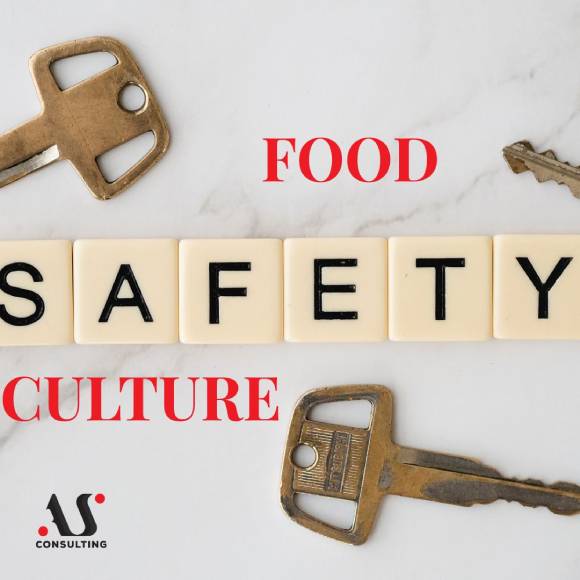
FOOD AS AN ALLERGEN (ALLERGEN MANAGEMENT)
September 14, 2022
GLUTEN FREE (with a view to the BRC Gluten free standard)
December 20, 2022Somehow unnoticed, in September 2020, the Codex Alimentarius Commission issued an amended edition of the Code of Practice (General Principles of Food Hygiene (CKSC 1-1969), where, among other things, there are novelties related to the HACCP system. Following the changes in the GFSI recognized standards, HACCP have been stand at the side, but since HACCP is the basis of the food safety management system of all GFSI recognized standards, it is desirable to refer to the latest changes.
What is new compared to the previous version of HACCP?
Here’s a short overview of the main changes that will be explained in more detail later:
- Changes in the structure of the guide: the guide now consists of two main parts: good hygiene practice and HACCP principles
- Food safety culture
- Allergen management
- Changes in HACCP principles
- New decision tree
- Changes in the dictionary of terms (definitions)
Structure of the guide. The structure of the guide consists of two basic parts:
1. Good hygiene practice (overview of previously required programs such as location, facility requirements, layout, allergen management, hygiene and personal hygiene, maintenance, equipment, training, pest management, etc.);
2. HACCP principles (about changes in detail in the text);
Food safety culture. The basis of the successful operation of any food safety management system is the development and improvement of a positive food safety culture. In order to achieve this, it is necessary:
– commitment of senior management and all staff to the production of safe products
– setting the course of action by senior management and then engaging all employees
– awareness of the importance of hygiene by all employees
– open and clear communication at all levels
– the availability of sufficient resources to ensure the efficient functioning of the food safety system
Management must ensure the effectiveness of established food hygiene systems through effective management of changes, checking documentation and record keeping, providing training to employees, ensuring compliance with legal regulations, encouraging continuous improvement.
Allergen management. Allergens are clearly recognized as a hazard, in addition to existing chemical, physical, microbiological, etc. hazards; identification of potential sources of allergens, protection and control from cross-contamination, training of employees, requirements related to labelling process and notification of consumers are necessary.
Changes in HACCP principles. The development of the HACCP plan is based on 5 steps and 7 principles, which together make up 12 steps of HACCP. We will not explain the steps and principles here because they are already explained in detail in the blog: “HACCP system” (20.11.2020) where through a short online training you can familiarize yourself with the previously required programs and the creation of a HACCP plan. In the following table you can see a comparison between the old and modified HACCP principles:
| „new HACCP“ | „old HACCP“ |
| Step 1: Assemble HACCP Team and Identify Scope | Step 1: Assemble HACCP Team |
| Step 2: Describe product | Step 2: Describe product |
| Step 3: Identify intended use and users | Step 3: Identify intended use |
| Step 4: Construct flow diagram | Step 4: Construct flow diagram |
| Step 5: On-site confirmation of flow diagram | Step 5: On-site confirmation of flow diagram |
| Principle I: List all potential hazards that are likely to occur and associated with each step, conduct a hazardanalysis to identify the significant hazards, and consider any measures to control identified hazards | Principle I: Conduct a hazard analysis |
| Principle II: Determine the Critical Control Points | Principle II: Determine the Critical Control Points |
| Principle III: Establish validated critical limits for each CCP | Principle III: Establish critical limits for each CCP |
| Principle IV: Establish a Monitoring System for Each CCP | Principle IV: Establish a Monitoring System for Each CCP |
| Principle V: Establish corrective actions | Principle V: Establish corrective actions |
| Principle VI: Validation of the HACCP Plan and Verification Procedures | Principle VI: Establish Documentation and Record Keeping |
| Principle VII: Establish Documentation and Record Keeping | Principle VII: Verifiction procedures |
We notice that the news refers to:
Step 1: Assembling of the HACCP team and identification of the scope: there are no changes when it comes to the HACCP team: the company is obliged to form a multidisciplinary team with good knowledge of Codex HACCP principles and the scope of the HACCP plan must be defined. The scope will describe all products and processes involved in the study.
Step 3: Determining the intended use of the product and the user: describe the intended use by the next user in the chain or the consumer; it is necessary to identify vulnerable user groups.
Principle I: List all potential hazards that may occur and are associated with each step, conduct a hazard analysis to identify significant hazards and consider all measures to control identified hazards: identify all potential hazards and then evaluate them to gain insight what are the hazards whose prevention, elimination or reduction to acceptable levels is essential for the production of safe food.
Principle III: Determination of validated critical limits for each CCP: Critical limits for control measures at each CCP should be specified and scientifically validated to provide evidence that hazards can be controlled and reduced to an acceptable level.
Validation of critical limits may involve conducting studies (eg, microbiological inactivation studies). Companies may or may not conduct or commission studies themselves to confirm critical limits. Critical limits can be determined on the basis of existing literature, regulations or instructions of competent authorities, or studies conducted by a third party, e.g. studies conducted by the equipment manufacturer.
Principle VI: Validation of the HACCP plan and verification procedures: Before the HACCP plan can be implemented, it’s validation is required; this consists of ensuring that the following elements together can provide control of significant hazards relevant to food safety: hazard identification, critical control points, critical limits, control measures, frequency and type of CCP monitoring, corrective actions, frequency and type of verification and type of information should be available.
Validation of control measures and their critical limits is performed during the development of the HACCP plan. Validation could include reviewing the scientific literature, using mathematical models, conducting a validation study, and/or using guidelines developed by authoritative sources.
New decision tree. The decision tree has been modified to accommodate the fact that we now use prerequisite programs to manage the core processes by which we obtain safe food. The new decision tree can be seen in the draft version (PROPOSED DRAFT DECISION TREE (REVISION OF THE GENERAL PRINCIPLES OF FOOD HYGIENE (CXC 1-1969)) and it looks like this:
The tree really seems like an improved version of the previous one because for most of the steps where there really are adequate measures in the form of previously established control programs, it gives us a logical answer that the measures are sufficient and that we don’t have to think about the existence of a CCP point.
If you need training for employees or help in preparing a HACCP study, you can contact our Agency!!!




